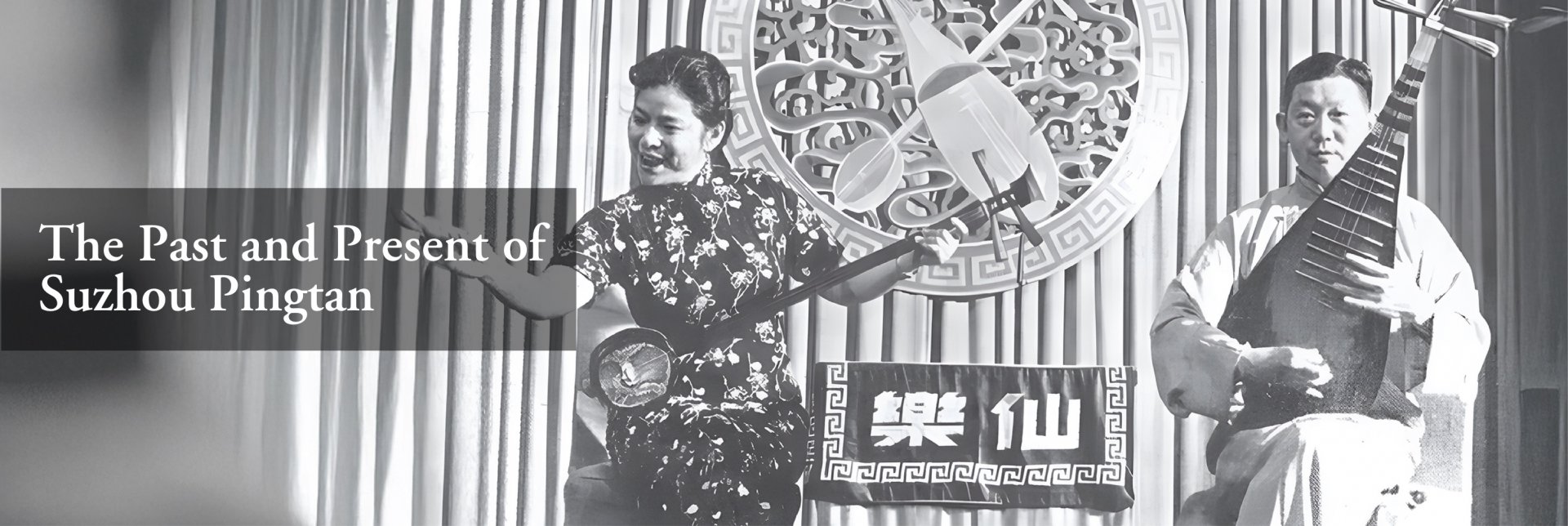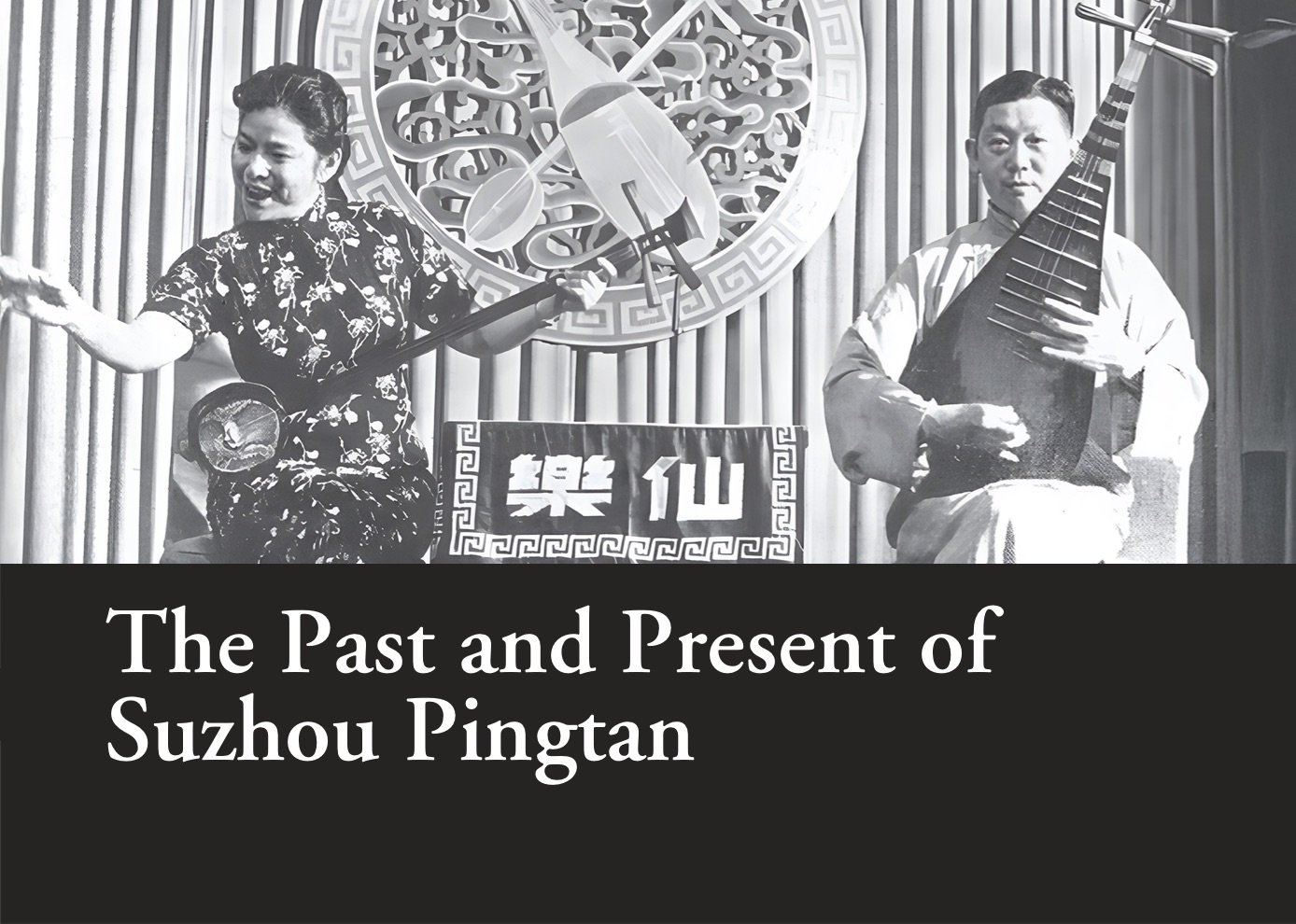The Past and Present of Suzhou Pingtan (1): Suzhou Pingtan and the Geographical Environment of Jiangnan
Speaking of quyi (literally melody and art曲艺) in Jiangnan area, south of the lower reaches of the Yangtze River, I would like to talk about its top representative, that is pingtan (評彈) storytelling in the Suzhou dialect. Suzhou pingtan is the pearl of quyi and claimed as the most beautiful voice in China. Suzhou pingtan and the geographical environment of Jiangnan are closely integrated with each other. Pingtan was born here due to this beautiful environment and makes it even more beautiful.
Water is the soul of Jiangnan. There are three major water areas in Jiangnan: the first one runs along the Yangtze River (長江), the second centers around the Taihu Lake (太湖), and the third is the Hangzhou Bay (杭州灣, some areas in the north and south of the Hangzhou Bay are included). These three water areas are connected with dense waterways, towns scattering here and there and ships shuttling back and forth, creating a bustling picture of the water town. These waterways carry the functions of both economic circulation and cultural dissemination. Since the Ming and Qing dynasties (1368-1911), pingtan storytellers have travelled through docks with their parcels, delivering the art to every corner of Jiangnan society. Therefore, the specialty of Jiangnan lies in its water network and network of cultural dissemination, which is also the spreading network of pingtan.

According to statistics, there were 156 pingtan stories in the history, including 70 pinghua (storytelling without music评话) and 86 tanci (storytelling with music弹词). In the actual performance, the pingtan storytellers would go from dock to dock and village to village and relate the stories in their own ways. Therefore, the villagers could have the chance to watch the performances even if they never leave the place where they were born. One full-length story might be told for two months, or even half a year, so these stories are enough for a villager to listen to for a lifetime.

Pingtan storytellers travel around the Jiangnan area by boats, carrying a small rattan box on board, which contains his long gown, change of clothes, a piece of gavel and a folding fan. If needed, they would carry musical instruments pipa (琵琶) or sanxian (三弦) on their back. Pingtan is easier to perform than operas in this respect. For the opera performances, a troupe, many props and costumes are necessary, therefore, at least one or two boats are needed. Comparatively speaking, pingtan is referred to “light cavalry”, which means that it can be performed everywhere with light equipment.
There are pingtan fans in every town of the Jiangnan region. I will use three examples to illustrate it. The first is Xushuguan (滸墅關), a town about 7 miles away from downtown Suzhou. The people in the town have high tastes and thus are critical about pingtan performance, so those who have not performed there are not considered to have started their careers, that is, they cannot be considered a qualified storyteller.
The second example is Shuanglin Town (雙林鎮) in Wuxing County (吳興縣), Zhejiang Province. A small pier as it is, there is no other entertainment but a few story houses. Therefore, most of the residents there enjoy listening to pingtan. In the past, the older generation of xiangdang (renowned storytellers响档) from the Guangyu Society (光裕社) was popular with a large number of audiences in the town.
The last example is Shengze (盛澤), a prosperous town in Jiangsu Province (江蘇省). Known as the “story dock”, it had more than 10 story houses at its peak, most of which were operated by tea houses. It is said that Ma Rufei (馬如飛, 1817-1881), the founder of the Pingtan industry, once went to Shengze to perform his masterpiece Pearl Pagoda (珍珠塔, Zhenzhu ta). Today, there may not be any story house in these towns, so it is hard to imagine the grand scene back then. With over a dozen of story houses competing together, the best storytellers would attract the most listeners for sure.

However, if the performance is not satisfying, there would be another story. It is said that if there is a slight disagreement, the audience will criticize each other during the morning teatime on the following day, and they will not come for the performance in the afternoon. Even if the story house can host over 100 people, it will become Mount Wutai (literally five flat-peak mountains五台山) in three days, which means that if the performance is not attractive, only five tables, benches and three listeners will be left. This would be a tragedy for storytellers.
Suzhou, as the center of Jiangnan, is needless to mention. Lots of people in Suzhou have leisure time, and would idle away their time to the pingtan performance in the tea houses after meals. Enjoying the storytelling has actually become a part of daily life for people in Suzhou and even in Jiangnan area.
After Shanghai opened its port in 1840s, pingtan performance entered Shanghai and story houses were popular for a while. The photo shows the famous duo of Zhu Xueqin (朱雪琴, 1923-1994) and Guo Binqing (郭彬卿, 1920-1968), who performed at Xianle Story House (仙樂書場). The story houses like Xianle and Cangzhou (滄州書場) were among the best in Shanghai at that time. The performers who were most acceptable and popular in these story houses were regarded as xiangdang (響檔) in Shanghai, which stands for the highest level in the field of pingtan.

In traditional Chinese society, the residents are stable with little migration. The storytellers will perform in one place for two or three consecutive months and then leave for another place because local residents would lose interests in listening to them twice. Therefore, the storytellers are obliged to go from dock to dock, which is a process of making a living, and at the same time, a process of disseminating culture. Storytellers are classified into different levels, including ordinary storytellers, “top storytellers at docks (響檔碼頭)” and “top storytellers in Suzhou (蘇州響檔)”. Facing the fierce competition and rare opportunity, only a few talented storytellers can be titled as “top storytellers in Suzhou”, and then after fighting their way to Shanghai, fewer of them can get their reputation there. As a result, going through docks is a dispensable life experience for storytellers.
In reality, such a network of storytelling and cultural transmission is closely related to the network of water systems or towns in the Jiangnan region. To further illustrate it, we made this diagram. We can see that villages and towns are distributed at the intersection of water flows, big cities such as Changzhou (常州), Wuxi (無錫), Suzhou (蘇州), Jiaxing (嘉興), Huzhou (湖州), Hangzhou (杭州), etc. are distributed along the Grand Canal and Shanghai is located at the mouth of the Yangtze River, Huangpu River (黃浦江) and Suzhou River (蘇州河). The towns and cities are dotted on the network of the Jiangnan water systems like stars, and story houses are more densely dotted. The larger the dock, the more story houses. For example, Suzhou hosted the most story houses in traditional society, but in modern times, Shanghai had the most. The red color in the diagram shows the places with the highest density of story houses. Water carries the way. Suzhou pingtan forms a huge cultural network along the water in the south of the Yangtze River, penetrating into every cell and strongly influencing the daily life and aesthetic values of the people in the Jiangnan region.

All articles/videos are prohibited from reproducing without the permission of the copyright holder.




Welcome to leave a message:
Please Sign In/Sign Up as a member and leave a message